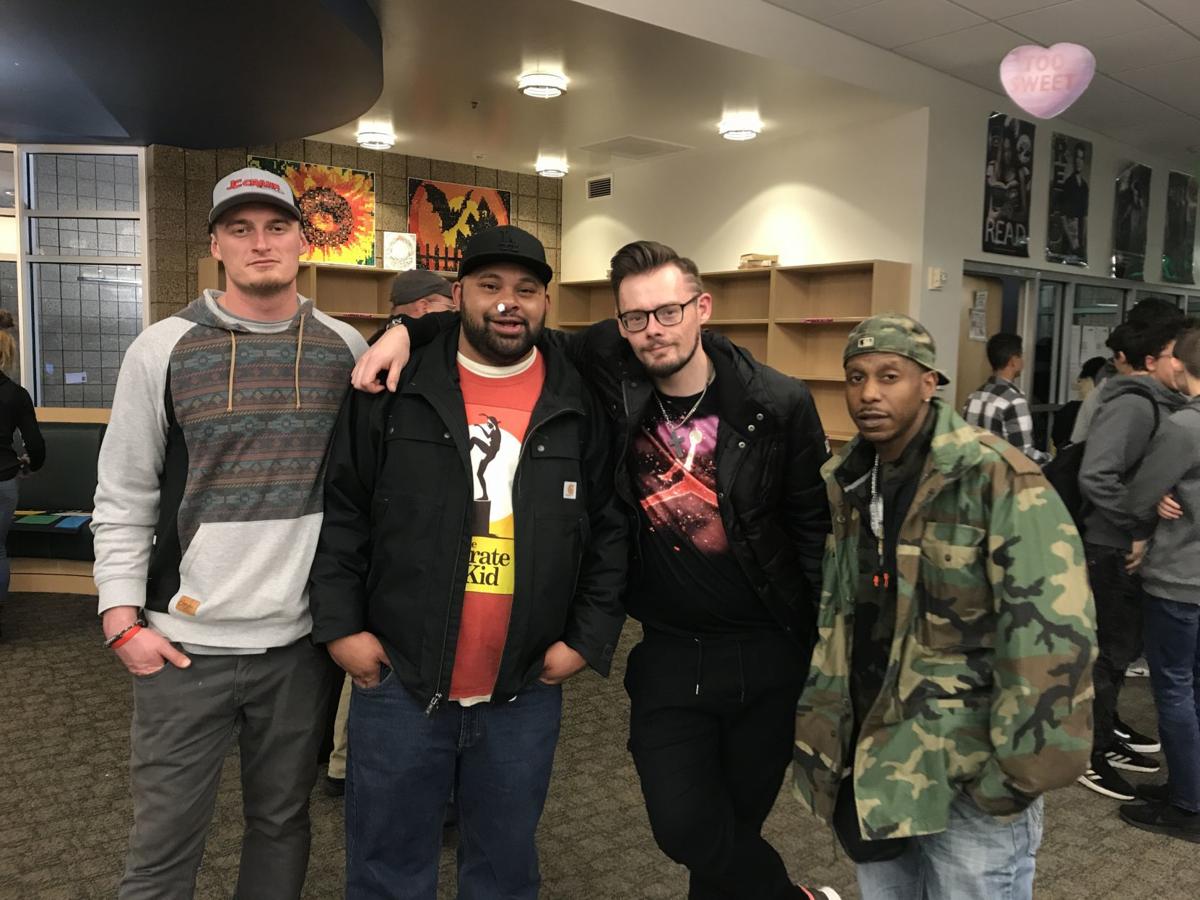Timberline 9th graders learn about drug addiction from those who’ve experienced it


Isaac Long has spent 16 years of his life addicted to drugs. He started smoking marijuana when he was 12 and eventually moved on to pain pills after being prescribed them for an injury. When he couldn’t find a doctor to prescribe him Percocet, he started using meth and heroin.
Now that Long is enrolled in an addiction recovery program, he wants to help kids in Utah avoid going down the same road he went down around their age. Long and others recovering from drug addiction have spent weeks sharing their experiences with 9th grade students at Timberline Middle School in Alpine.
“I really just wanted them to hear my story,” Long said. “It’s not something that happens in another world. This stuff is really close to home.”
Hannah King, a biology teacher at Timberline, said she wanted to go beyond the regular curriculum when teaching about drug use and addiction’s effect on the body. King wanted her students to see the human face of addiction and hear the voices of people who have gone through it.
Timberline partnered with the Rescue Mission of Salt Lake and The Other Side Academy to have eight 9th grade biology classes learn about addiction from former inmates and those who have been homeless.
“We’ve kind of just fallen in love with these people and their rehabilitation stories,” King said. “I think if you talk to these kids this year compared to last year, you’ll find that they are so much more empathetic about addiction” and its impact on people’s lives.
After hearing addiction stories, each student chose an addictive chemical to research and write about. On Wednesday, students presented their research to parents and people recovering from drug addiction.
Matthew Mabey researched ketamine’s effects on the endocrine, nervous and immune systems while Trey Jenkins looked into fentanyl. Emily Myres said she chose to study inhalants, such as glue or spray paint, since they are a household item and can kill someone on first use.
Some students looked into non-addictive drugs. Grace Moen researched Abraxane, a chemotherapy drug used to treat breast and pancreatic cancer.
Each student made either a brochure or a website highlighting their research, including information about drug recovery and treatment.
“(I)f you are taking ketamine you probably think there is no hope to stop from being addicted, but there is,” Maybe’s brochure said.
Mike Dandin, who has been addicted to alcohol and is currently enrolled in the Rescue Mission’s addiction recovery program, said it is never too early for kids to learn about addiction, adding that learning at a young age will make it less likely they experiment with drugs themselves.
Another participant in the program, Jack Fotofili, said parents need to get more involved and help their kids understand the impacts of drug use. This is not just a science project, Fotofili said, “this is your kid’s life.”
King said she hopes that by hearing the stories of Dandin, Fotofili and others, her students be more compassionate toward those who have been addicted and help them understand real impact it has on people’s lives.
“It’s about awareness and empathy,” she said.
Connor Richards covers government, the environment and south Utah County for the Daily Herald. He can be reached at crichards@heraldextra.com and 801-344-2599.
 Pathways Drug Rehabilitation Luxury Addiction Treatment & Detox Center
Pathways Drug Rehabilitation Luxury Addiction Treatment & Detox Center


